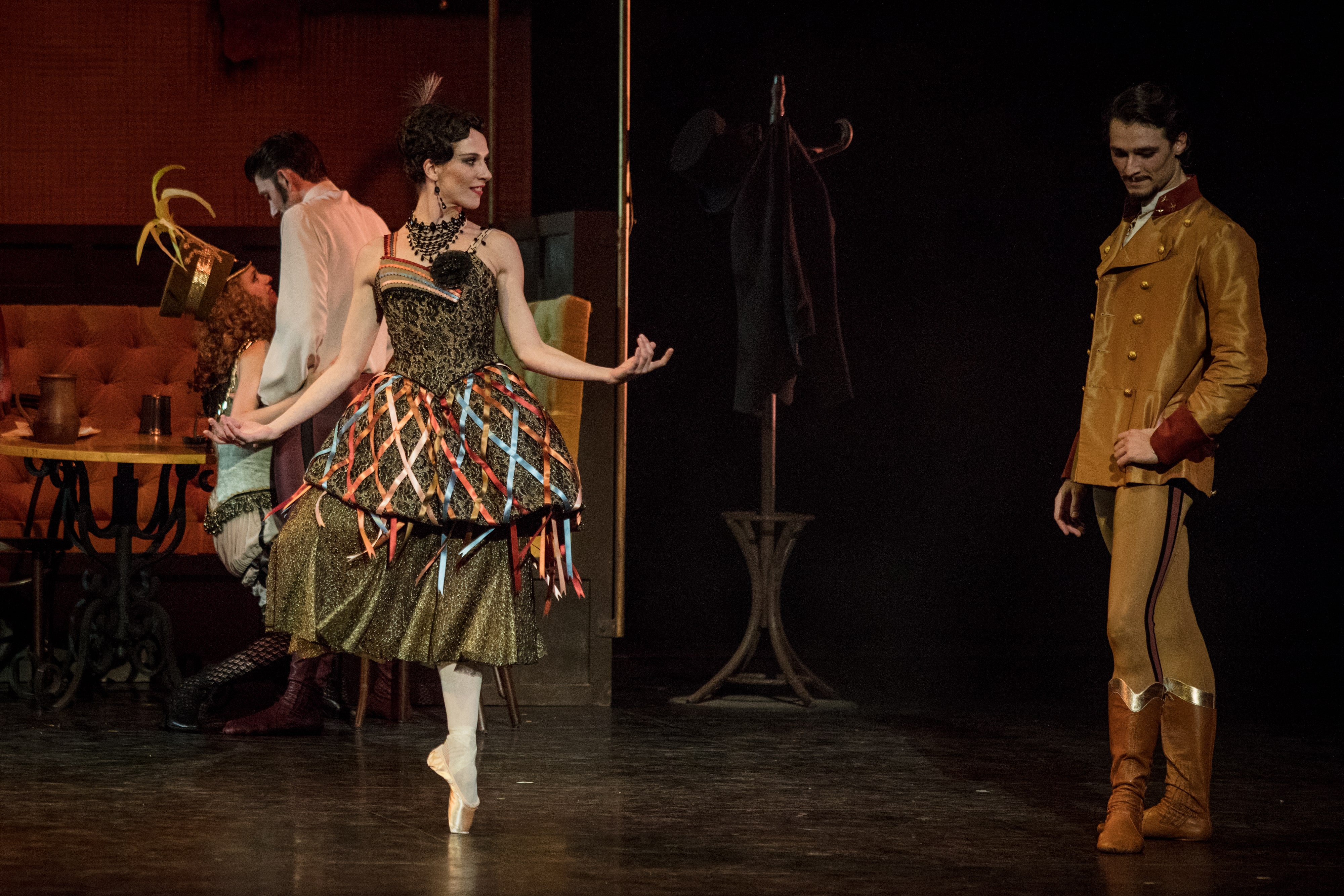
The great myths of literature are not the only sources for choreographic stories. History, with its significant events and iconic figures, has also provided a wealth of material for ballet. Historical narratives add depth and authenticity to choreographic works, capturing the audience's imagination while grounding them in tangible realities.
There are narrative ballets with historical themes that also draw on pre-existing fictional works. For instance, Le Rouge et le Noir, adapted by Pierre Lacotte from Stendhal’s famous novel, and Les Enfants du Paradis, choreographed by José Martinez based on Marcel Carné's iconic film, depict specific eras and social contexts. Both ballets were created at the Paris Opera's Palais Garnier.
Le Rouge et le Noir tells the story of Julien Sorel, an ambitious young man striving to climb the social ladder in post-Napoleonic France. This ballet explores themes of love, ambition, and betrayal, highlighting the social and political tensions of the time. Through his choreography, Pierre Lacotte captures Stendhal’s characters and brings to life the intricacies of the plot.
Les Enfants du Paradis is set in 19th-century Paris, revolving around the loves and rivalries of the artists of the Boulevard du Crime. Inspired by the 1945 film, this ballet explores the complex relationships between key characters: Garance, Baptiste, Frédérick, and Lacenaire. José Martinez uses dance to convey the characters’ profound emotions and dilemmas, while paying tribute to the unique atmosphere of Paris in that era.
Les Flammes de Paris is an epic ballet that takes audiences to the heart of the French Revolution. Choreographed by Vasily Vainonen with music by Boris Asafiev (tracks 1-2), this ballet retraces the tumultuous events of 1789 through the intertwined stories of both fictional and historical characters. The impressive crowd scenes and dramatic moments capture the revolutionary spirit and the fight for freedom, creating a compelling historical tableau.
Kenneth MacMillan's Mayerling (tracks 3-4) is a dramatic ballet based on the tragic double suicide of Archduke Rudolf of Austria and his mistress, Mary Vetsera, in Mayerling in 1889. With music by Franz Liszt, arranged by John Lanchbery, this ballet explores themes of passion, politics, and tragedy. It offers an intimate view of the archduke’s turbulent life while illuminating the tensions and conflicts within the Austro-Hungarian court.
In Ce que j’appelle oubli, Angelin Preljocaj draws inspiration from a tragic French news story about a man who died after an altercation with police in a supermarket. Set to music by Nicolas Godin and Jean-Benoît Dunckel of the group Air (tracks 5-6), this ballet addresses themes of violence, injustice, and humanity. Preljocaj’s choreography captures the brutality and emotion of this contemporary story, offering a poignant reflection on modern society.
Ballets can also serve as dance biographies, exploring the lives of historical or artistic figures. Ivan the Terrible (tracks 7-8), choreographed by Yuri Grigorovich to music by Sergei Prokofiev (tracks 9-10), tells the story of Tsar Ivan IV of Russia, delving into his rise to power and the intrigues of his reign. Grigorovich's Spartacus, with music by Aram Khachaturian, portrays the famous Thracian gladiator who led a revolt against the Roman Empire.
Nijinsky, choreographed by John Neumeier, is a dance biography of Vaslav Nijinsky, one of the most celebrated dancers of the early 20th century. Set to music by Frédéric Chopin, Dmitri Shostakovich (tracks 11-12), and Carl Maria von Weber, this ballet explores Nijinsky’s meteoric career, his iconic works, and his descent into madness. Nureyev, another biographical ballet, traces the life of the legendary dancer Rudolf Nureyev, capturing his artistic triumphs and personal struggles.
Some ballets weave together fiction and reality, crafting works where historical facts blend seamlessly with the imaginary. Proust ou les Intermittences du cœur by Roland Petit, for instance, combines the writings of Marcel Proust with fictional elements, set to music by Beethoven, Debussy, and Fauré (tracks 13), exploring themes of memory and love. Similarly, Illusions – Like Swan Lake (tracks 14-15) by John Neumeier merges the fairy tale of Swan Lake with the life of King Ludwig II of Bavaria. Through this fusion, Neumeier creates a unique work that blurs the lines between reality and fantasy, transporting the audience into a realm where history and the ethereal meet.
Both ballets delve into existential themes, with Petit focusing on the psychological landscapes of Proust’s characters and Neumeier using King Ludwig’s escape into the performance of Swan Lake to illustrate his longing for redemption and peace. This approach not only reimagines historical narratives but also uses the language of dance to explore deep emotional and psychological experiences.
Ballets inspired by history revive stories embedded in our shared past, transforming them into something both distant and immediate. Whether through sweeping historical epics, dance biographies, or works that blur the line between fact and fiction, these performances combine rich storytelling with emotional resonance, speaking to our most fundamental human experiences. By drawing on real events, choreographers craft pieces that feel timeless, speaking to present-day audiences while paying tribute to the past. After all, nothing is more fascinating or shocking than reality itself, where the most extraordinary tales are often born of truth.
Image
Title: Valentine Colasante (Mitzi Caspar) - Hugo Marchand (Prince Rodolphe)
Copyright : Ann Ray / Opéra national de Paris